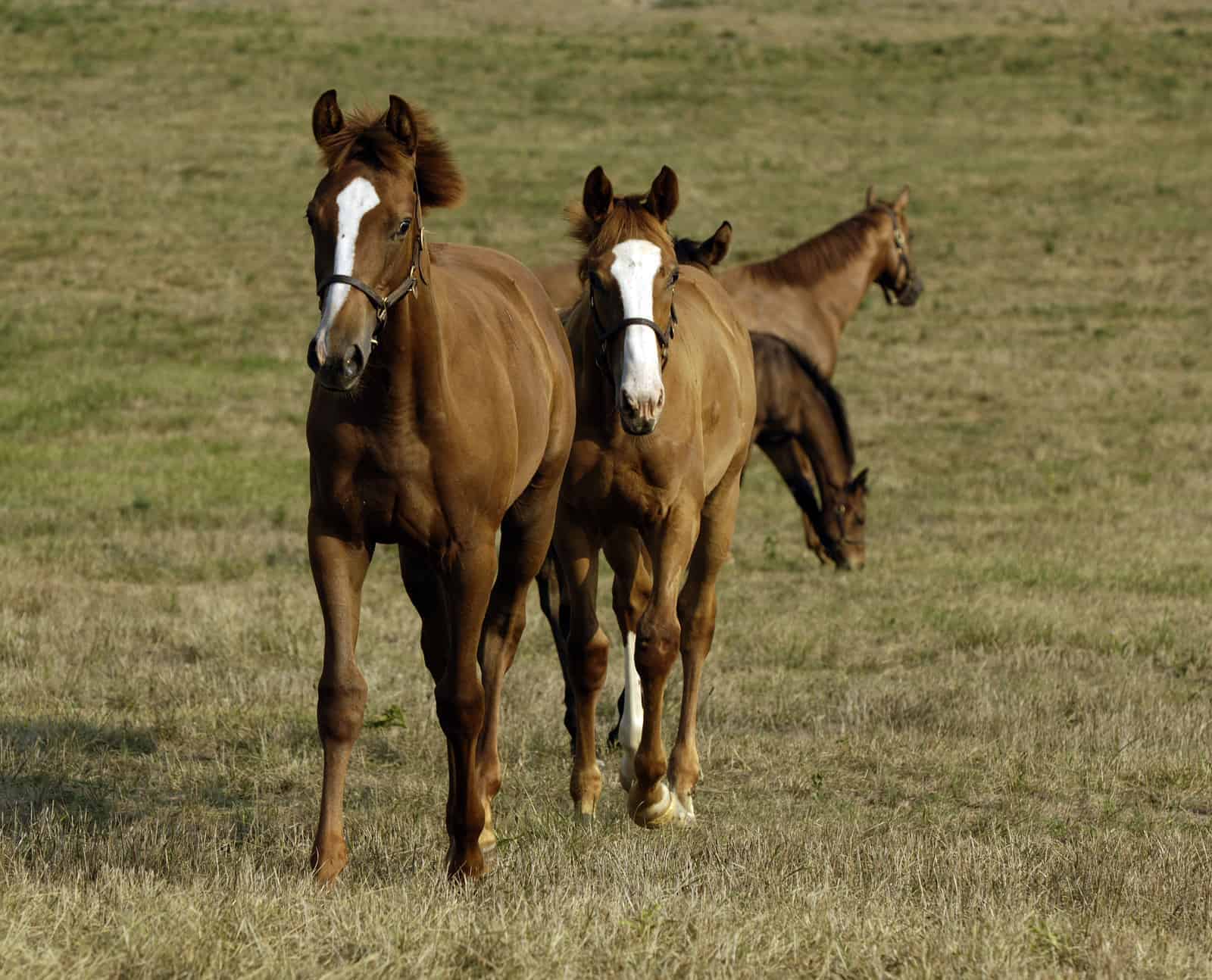Young Horse Development Part 2: Six Months to 1.5 Years

How you manage, feed, and care for your young horse during this transitional phase can affect his future performance and quality of life.
Large enough to do damage, but often untrained, stressed, and in fluctuating stages of growth, weanlings to long yearlings (roughly 6-18 months) are the gangly acne-and-hormone-plagued members of the equine world. As it is with the parents of teenagers, owners of young horses often seem bewildered about managing these metamorphosing charges. Yet, as with the adolescent human, developmental changes in the juvenile horse determine adult outcome.
Management of the horse’s environment during this period sets the stage for musculoskeletal development, growth, and trainability. Adverse conditions such as gastric ulcers, developmental orthopedic disease (DOD), stereotypic behaviors (vices), parasitism, and respiratory disease can impair future performance and quality of life.
A juvenile horse’s management needs depend on his owner’s intended arena/discipline. For instance, a sport horse being prepared for a future eventing career will likely have a dramatically different early life than an Arabian that will be shown at halter. However, despite differences in purpose and varying growth rates and genetic conditions, certain environmental factors are common to all horses
Create a free account with TheHorse.com to view this content.
TheHorse.com is home to thousands of free articles about horse health care. In order to access some of our exclusive free content, you must be signed into TheHorse.com.
Start your free account today!
Already have an account?
and continue reading.
Written by:
Christy Corp-Minamiji, DVM
Related Articles
Stay on top of the most recent Horse Health news with












